Spanish horror, Gothic and modern
I’m slowly catching up with Spanish genre cinema, thanks largely to Severin and Vinegar Syndrome, companies which have released a number of box sets in the past few years. The latest is Severin’s Danza Macabra Volume Three which, after two sets devoted to Italian Gothic movies, contains four rather minor Spanish works from the early 1970s.
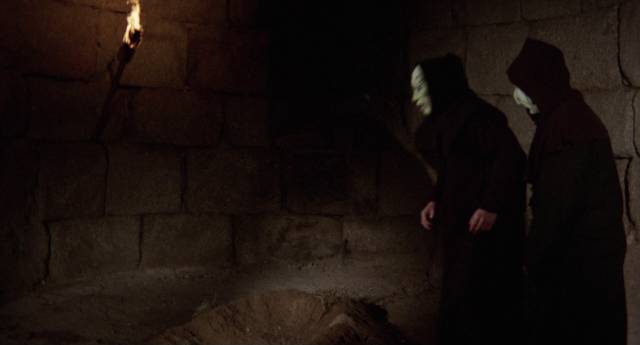
Necrophagous (Miguel Madrid, 1971)
Miguel Madrid was an actor and occasional writer who directed only three features – the third was a sex comedy, but the first and second were horror films, both credited to the pseudonym Michael Skaife. While his second film as director, The Killer of Dolls (1975), is a stylish and unsettling giallo, his first, Necrophagous (1971), is a clumsy period horror which never quite gets a grip on its narrative. Repetitive scenes are filled with hidden secrets and ominous glances, while pacing and performances are erratic; in more assured hands, it might have been an effective movie along the lines of Vernon Sewell’s The Blood-Beast Terror (1968).
Michael Sherrington (Bill Curran) returns from a lengthy business trip expecting to find his wife and their new child, only to be informed by his hostile mother-in-law that Elizabeth died in childbirth, and the baby with her. He’s told she died in despair because he had not communicated the entire time he was away. And yet he says he wrote every day – we eventually learn that one of his jealous sisters-in-law had intercepted his letters because she had wanted Michael for herself. But in the meantime, he tries to find out why Elizabeth died and is shunted around from one uncommunicative person to another until he finally digs up her grave himself and discovers an empty coffin.
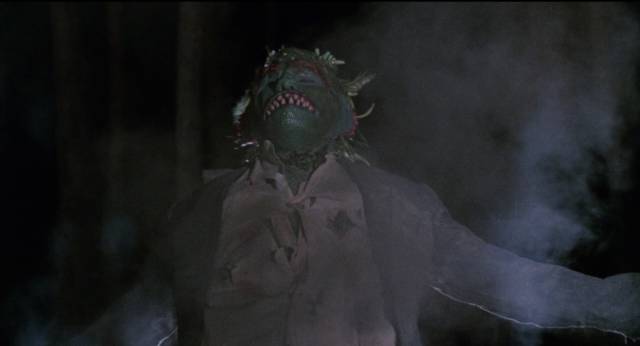
There are sinister doings at the graveyard with caretaker Mr. Fowles (Victor Israel) stealing the heads of the recent dead, boiling the flesh off them, and then trading the skulls to a local doctor. There’s also something strange prowling the woods and an earth mound in nearby ruins into which tubes feed blood from suspended bottles. Somewhere along the way Michael disappears and we learn that Michael’s brother Robert, a brilliant scientist, has also recently died but is being revived like a human-plant hybrid in that earth mound, requiring fresh blood and occasionally emerging from the ground to stalk people in the woods.
With a large number of characters whose behaviour and motives are never really made clear and an ill-defined monster, Necrophagous never comes into focus, though individual scenes are occasionally effective and it does manage to summon up some atmosphere, even though it remains unsatisfying as a narrative. Madrid was far more successful four years later with The Killer of Dolls.
*
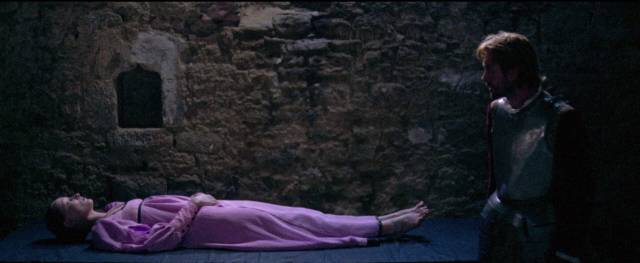
Cake of Blood (Various, 1971)
I’m not sure what the title means, but Cake of Blood (1971) is a four-part anthology of unrelated stories – more a program of rather arty short films than the kind of thing Amicus was doing around the same time in which some attempt was made to tie all the stories together. Each story, by a different writer-director, takes place in a different historical period, each told in an elusive style which suggests their horrors are to be taken metaphorically rather than literally.
José María Vallés’ Tarot is set around the year 1000 in a land populated by peasants and religious fanatics over which death hangs in both brutal and romantic forms. A wandering knight (shades of Ingmar Bergman’s The Seventh Seal [1957]) finds the body of a beautiful woman lying in the ruins of a castle and meets a boy, who also seems like a wizened old man, in the woods. The pair travel together for a while and during the night, the knight returns to the woman in that castle again. Her nature – sleeping beauty or demon – remains unclear and the meaning of the knight’s encounter is never resolved.
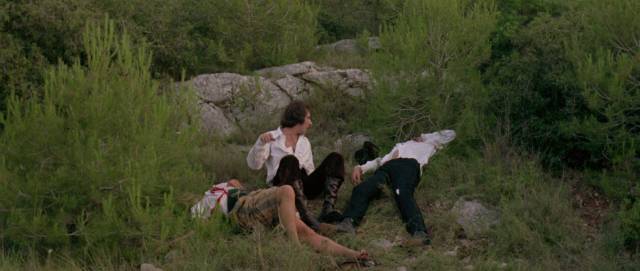
Emilio Martinez Lázaro’s Victor Frankenstein has the benefit of a familiar source, although it goes in its own direction. Victor, having been away at his studies for a long time, seems rather hostile to his family and fiancee when he returns. Pressured by his dying mother to marry, he tells his wife on their wedding night that he will send a man to her whom she should accept as if he were Victor himself. Rather than a patched-together creature, this avatar of Victor’s animosity is a handsome young man, only partly formed, who imitates the actions of those he meets before destroying them.
Francesc Bellmunt’s Terror Among the Christians has a noble convert and a gladiator fleeing persecution in Nero’s Rome, travelling through woods in search of a safe haven. These woods are dangerous – many Roman soldiers died here – and during the night the pair apparently encounter vampires.
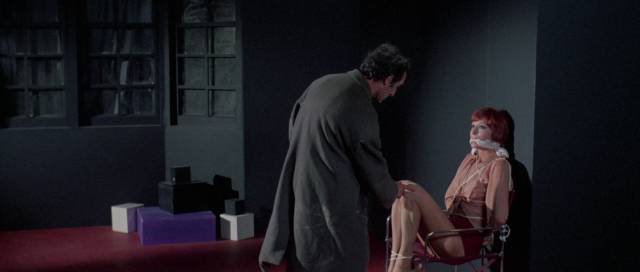
Finally, Jaime Chávarri’s The Dance, or Emotional Survivals is a contemporary ghost story in which a vagrant who is using a spyglass to watch a woman at a nearby villa is approached by a man who suggests that the two men could overpower the woman and steal her possessions. Having tied the woman to a chair, the other man leaves the vagrant to watch over her while he explores the house. It gradually emerges that the man and woman are the ghosts of a married couple using the vagrant in a strange game which reenacts their perhaps troubled relationship in life (something like a sketch for Mario Bava’s masterpiece Lisa and the Devil [1973]).
While the various episodes are all well-photographed, with generally fine casts, I found them too elliptical to be particularly engaging … though that may have been a matter of my mood. I might take another look at some point to see if I was missing something.
*
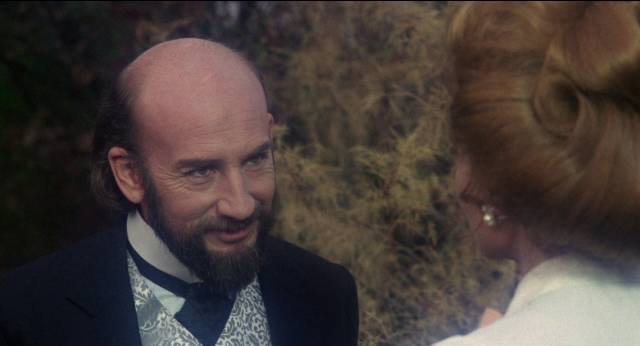
Cross of the Devil (John Gilling, 1975)
The oddest thing about Cross of the Devil (1975), which was based on several stories by 19th Century Spanish poet and author Gustavo Adolfo Bécquer, is that it was the final film directed by John Gilling, best-known for a number of Hammer movies and some significant independent British horror films, most notably The Flesh and the Fiends (1960). He seems an unlikely choice for a distinctly Spanish production, one co-written by Paul Naschy (under his real name Jacinto Molina), who apparently was unhappy that he had no further involvement in a project which he had nurtured for some time.
When drug-addicted English writer Alfred Dawson (Ramiro Oliveros) gets a letter from his sister Justine expressing her fear of her husband Enrique Carillo (Eduardo Fajardo), he travels to Spain with his fiancee Maria (Carmen Sevilla). On arrival, they discover that Justine is dead and are told that she was murdered by a vagrant during a hunting trip in the mountains. Unsatisfied, Dawson tries to speak with the accused man in prison only to be told that he had hanged himself just that morning. Although his brother-in-law tries to dissuade him, he insists on visiting the site of the murder, under an ornate iron cross supposedly made in the Middle Ages from a suit of the Devil’s armour.
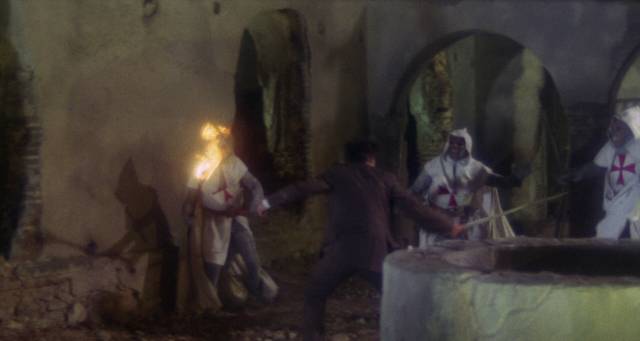
This prompts an account of various legends involving the Knights Templar, Satanism, and the death of a noblewoman named Beatriz (Emma Cohen). The sinister knights link the film to Amando de Ossorio’s Blind Dead series (1972-75). But rather than horse-riding zombies, the movie has a lower-key, rather leisurely revelation of lingering occult forces, largely embodied in Carillo’s gleefully sinister secretary Cesar del Rio played by Adolfo Marsillach, who obviously relishes his role as villain and injects a note of creepy humour into the proceedings. Though not particularly scary or suspenseful, the generally fine cast and excellent cinematography by Fernando Arribas (who was doing notable work for the likes of Jorge Grau, Vicente Aranda and Luciano Ercoli around this time) make Cross of the Devil an effective exercise in Gothic atmosphere.
*

The Night of the Walking Dead (León Klimovsky, 1975)
León Klimovsky was born in Argentina and, after fifteen years as a dentist, began making movies in the late 1940s, continuing a career as writer and director after settling in Spain in the mid-’50s. He’s now best known for his Gothic horror movies, a number made in collaboration with Paul Naschy. However, Naschy, who had some experience playing vampires, wasn’t cast in The Night of the Walking Dead aka Strange Love of the Vampires (1975); the role of undead nobleman Rudolph de Winberg went to Carlos Bellestaros. The movie was made around the time that vampires were getting a romantic makeover in films like Dan Curtis’s television version of Dracula (1974) and John Badham’s big-screen Dracula (1979), based on the 1977 Broadway revival starring Frank Langella. In Klimovsky’s movie, the object of the Count’s romantic obsession is Catherine (Emma Cohen), the beautiful but terminally ill daughter of an aristocratic family.
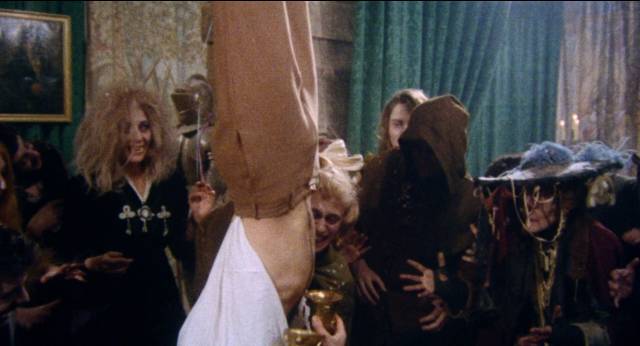
As the film begins, Catherine’s sister Mariam (Amparo Climent) has just died of a mysterious illness which the local doctor (Lorenzo Robledo) has diagnosed as anemia, but everyone in the village believes she’s the victim of a vampire. Against the doctor’s protest, before Mariam is buried a wooden stake is hammered into her heart. This precaution proves futile as that night a pair of female vampires dig her up and pull out the stake, which revives her. Mariam appears at Catherine’s bedroom window in a swirling mist, prefiguring a key image from Tobe Hooper’s Salem’s Lot (1979).
Catherine is drawn to the castle above the village and falls for the Count as the vampire plague spreads. The numbers of undead are eventually sufficient for a lavish ball reminiscent of Roman Polanski’s Dance of the Vampires aka The Fearless Vampire Killers (1967). But alas, while Catherine is attracted to the possibility of prolonging her existence by submitting to the Count, her illness claims her before he can turn her into his undead bride, leaving him to continue sadly alone.
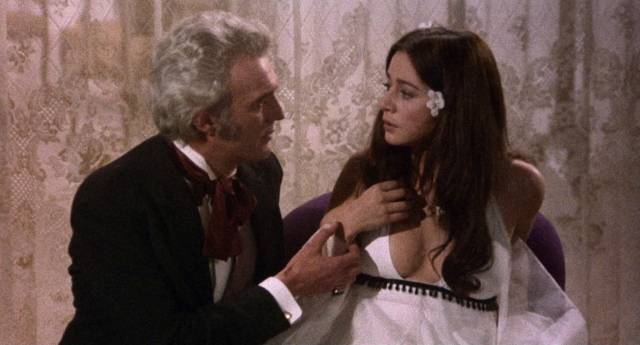
Although uneven, the film adds some interesting twists to its familiar vampire tropes, with a good cast adding some depth to the characters. The standout is Emma Cohen, strikingly beautiful, and initially imbued with a melancholy innocence – facing an inevitable early death herself and coping with the death of her sister, she is drawn towards the possibility of surviving by submitting to evil – she doesn’t even object when her fiancee is virtually torn apart by a crowd of vampires, though having recently discovered that he has betrayed her she might justifiably see this fate as deserved. Although survival as one of the undead may seem problematic, her untimely death has an air of tragedy.
*
All four films look as good as you might expect, with the first three scanned in 4K from the original negatives, while the original negative of The Night of the Walking Dead was only given a 2K scan for some reason. Each film gets a commentary, and there are brief appreciations from Ángel Sala, programmer of the Sitges Film Festival, as well as a couple of video essays and interviews with some cast and crew members.
*
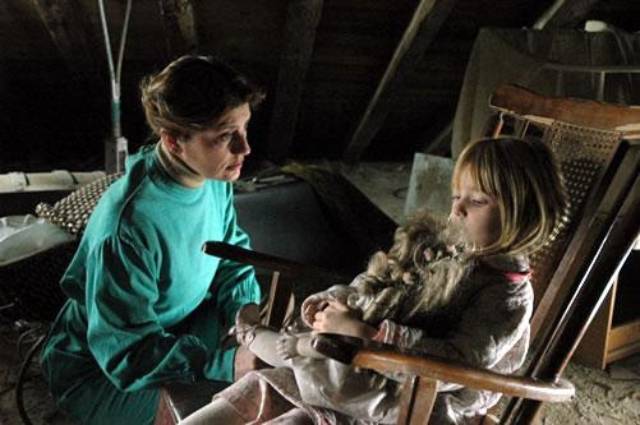
6 Films to Keep You Awake (Various, 2006)
And speaking of Spanish horror, Narciso Ibáñez Serrador revived his series Tales to Keep You Awake (1966-82) as six made-for-television features in 2006 – though rather than directing them all himself, he was joined by five other filmmakers – Jaume Balagueró (the [REC] series), Paco Plaza (co-director of the [REC] series), Mateo Gil (best known for writing several Alejandro Amenábar films), Enrique Urbizu (who co-wrote The Ninth Gate for Roman Polanski), and Álex de la Iglesia (Acción Mutante, The Day of the Beast, Perdida Durango). The results are uneven, but several of the films are effectively creepy, the mix of humour and horror from the original series giving way to more graphic effects and explicit violence.
Blame, Ibáñez Serrador’s contribution, has single mother and nurse Gloria (Montse Mostaza) taking a room in the large old house of Dr. Ana Torres (Nieve de Medina) in exchange for helping out in the doctor’s clinic. Gloria is uneasy when she learns that Ana’s practice is mostly providing illegal abortions to desperate young women. To make things more awkward, Ana makes it increasingly clear that she desires a sexual relationship with Gloria. When a casual relationship leaves Gloria pregnant once again, she gives in to Ana’s pressure and has an abortion – but whether it’s a matter of guilt or there are actual supernatural consequences, things spiral downhill quickly, with strange manifestations in the house and troubling behaviour from Gloria’s young daughter Vicky (Alejandra Lorenzo).
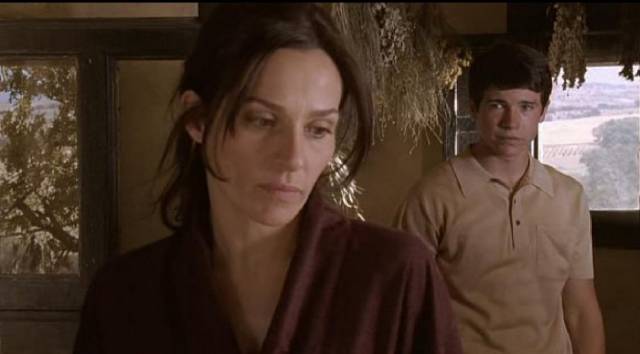
Abortion also figures in Mateo Gil’s Spectre, emphasizing the weight of Catholicism which still hangs over Spanish society. Tomas (Jordi Dauder), an elderly writer who has been living in exile for a long time, returns to the village of his childhood and finds painful memories surfacing. As a boy, he had been drawn to a woman who lived alone outside the village. Moira (Natalia Millán) is shunned by the villagers, who suspect her of being a witch. Her crime seems to be that she is unashamedly sexual – and eventually she begins a relationship with Tomas (Juan José Ballesta as a boy). He becomes possessive and jealous when he realizes that he isn’t her only lover and is instrumental in triggering the villagers’ primitive communal punishment. But what he believes are demon lovers visiting her at night turn out to be desperate women and girls seeking illicit relief. With numerous aborted babies found buried around her cottage, the villagers burn Moira alive as Tomas watches.
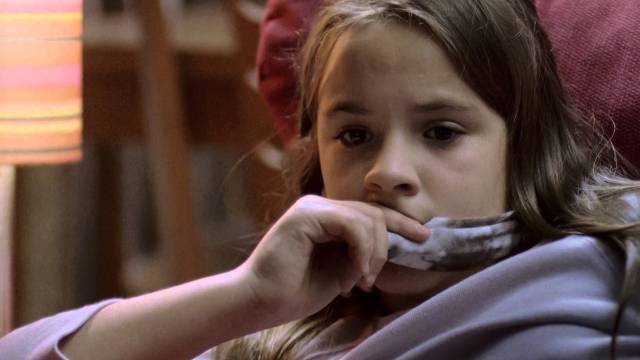
In Enrique Urbizu’s A Real Friend, teenager Estrella (Nerea Inchausti) spends her time watching horror movies and reading horror stories. Various figures from these stories begin appearing and, seemingly, acting out her frustrations and resentments – in particular, Leatherface with his chainsaw. A man on a motorcycle, whom she names the Vampire, may or may not be any more real … until he’s revealed to be her father, newly out of prison, and insinuating himself back into her life to resume an abusive relationship with her mother. The blurring of imagination and reality and the manifestations of violent trauma are effective for a while, but Urbizu doesn’t seem to know how to resolve the interconnected layers and by the end the film collapses in on itself in an unsatisfying way.
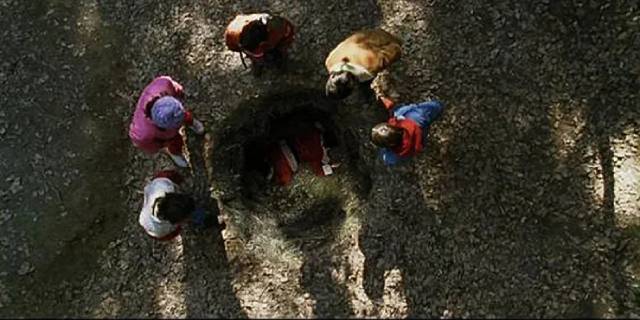
For some odd reason, IMDb gives George Romero a co-directing credit on Paco Plaza’s A Christmas Tale, though this doesn’t appear on the film, the packaging or anywhere else on the Internet. (However, this mysterious credit is what brought the series to my attention.) The film is pretty bleak. A group of young friends find a woman dressed in a Santa suit at the bottom of a pit in the woods; at first they think she’s dead, but it turns out she’s unconscious from her fall. They debate what to do about her, whether to report her to the authorities or keep her as their secret – they do toss down some food in the meantime. Then they discover from a newspaper that she’s wanted for a recent robbery and try to make a deal; they’ll help her out if she tells them where the money is. Although there’s some conflict in the group – a couple of kids think they should actually help the woman, while the more dominant ones become increasingly ruthless … with childish amorality eventually winning out with fatal consequences. It’s a rather nasty but effective exercise in kid-centred horror.
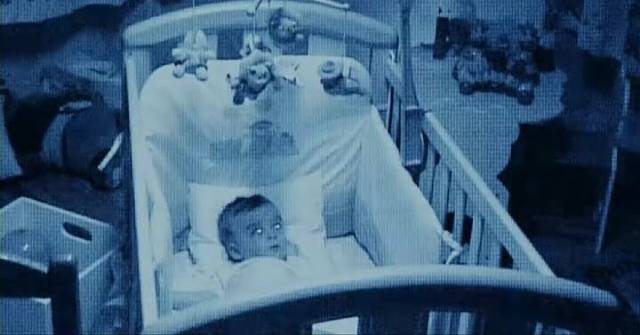
Álex de la Iglesia’s The Baby’s Room is the closest the series gets to a classical ghost story and he handles it well, steadily building atmospheric tension towards a downbeat ending. Juan (Javier Gutiérrez) and Sonia (Leonor Watling) move, with their newborn baby, into a big old house they’ve acquired at a suspiciously low price. Viewers already know that there’s something odd about the house from a prologue set decades earlier in which a child exploring the derelict building is dragged through some kind of portal, returning several hours later changed. They receive vague warnings, but are happy to have found a new home. Then one night, on a video baby monitor, Juan sees a strange figure looming over the crib; running to the baby’s room, he finds nothing, but reports the intruder to the police. As he’s the only one who sees this apparition, he begins to seem unhinged and Sonia grows fearful that he might hurt her or the baby. Eventually, he’s drawn into a parallel house, where he becomes trapped as changelings take his and the baby’s place in this world.
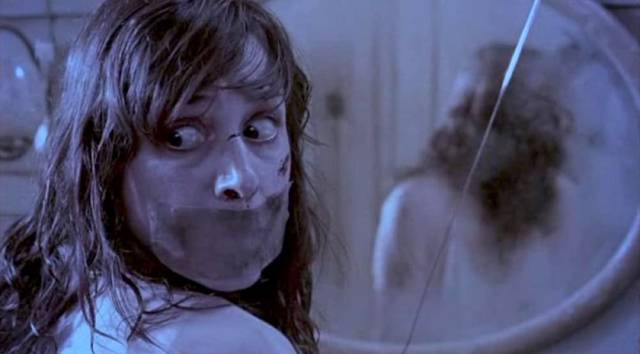
Jaume Balagueró’s To Let is nasty and visceral and ends up frustrating because it requires its characters to make stupid decisions in order to reach its bleakly cynical ending. Mario (Adrià Collado) picks up his pregnant wife Clara (Macarena Gómez) after an exhausting night shift where she works as a nurse and tells her he’s found a home for them. Although she’s tired and irritable, he drives them to the outskirts of the city into a bleak, industrial wasteland where they eventually arrive at a looming old apartment block. Sonia doesn’t even want to go in, but they’re met by rental agent Portera (Nuria González) and are too polite to refuse to follow her in. The place looks like a dump and the most sensible thing to do would be to say they changed their minds and leave … but they follow her upstairs where they discover they’re at the mercy of a madwoman. Having spent her life looking after the building, Portera can’t accept the fact it’s been condemned and scheduled for demolition. Unsatisfied with populating the now-empty apartments with store dummies, she’s taken to stalking likely people who are looking for a place to live and sticking enticing flyers in their mailboxes. Now she’s slowly filling the building with tenants she cripples and ties up in the rooms. While Portera is an interesting creation, her power depends on everyone doing the annoying things characters in torture-porn/slasher movies all too often do – like not making sure she’s disabled (or dead) after they’ve subdued her and turning their backs so they don’t see her rising behind them. Or not just getting the hell out of the building and going to the police instead of going back upstairs to look for something they’ve forgotten… by the time Portera regains the upper hand and resumes her efforts to repopulate the building, I felt that Mario and Clara deserved their fate.
All six films in the series are well-produced with very good casts, with scripts that play on common anxieties (unwanted pregnancies, finding a secure place to life, the stress of new parenthood, adolescent alienation). While Ibáñez Serrador’s earlier television series relied on ironic narrative twists, these new episodes lean towards more graphic horror. I found the 2008 Lionsgate three-disk DVD set on eBay at a reasonable price. Each movie comes with a short making-of featurette.
Comments